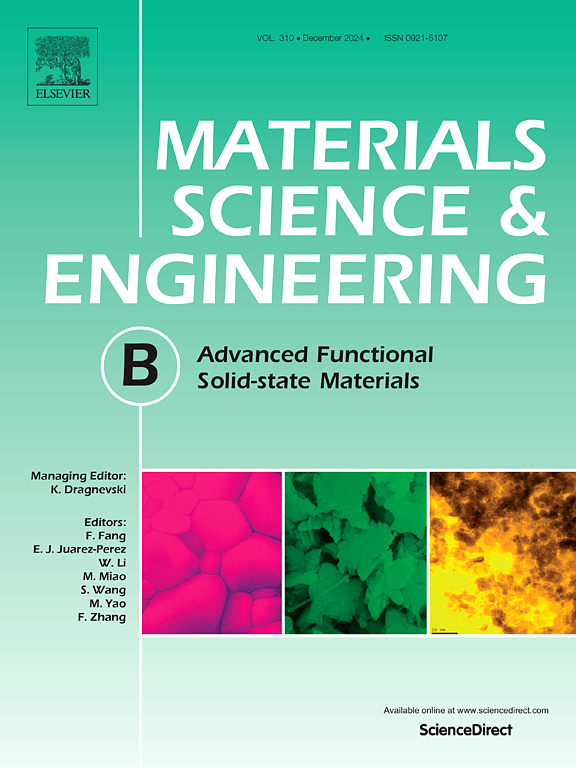控制石墨烯的尺寸以获得更好的电化学传感器
IF 3.9
3区 材料科学
Q2 MATERIALS SCIENCE, MULTIDISCIPLINARY
引用次数: 0
摘要
在这里,我们报告了使用不同的剥离方法生产具有控制横向尺寸的氧化石墨烯(GO)及其对电分析响应的影响。对它们的结构、形态和官能团进行了表征。将氧化石墨烯薄膜沉积在氧化铟锡(ITO)电极上,电化学还原为还原氧化石墨烯(rGO)。该薄膜被用作抗坏血酸的计时电流传感器。通过尖端超声获得的rGO-TS具有表达性低检测限(LD)和定量限(LQ),分别为0.90±0.35和2.90±0.12 μmol L−1,重复性好,干扰最小(或无)。rGO-TS薄膜检测n -乙酰半胱氨酸的LD和LQ也较低,分别为6.59±1.36和21.97±4.55 μmol L−1。优化后的rGO-TS薄膜具有较好的导电性和较高的边比。这项工作代表了对氧化石墨烯和氧化石墨烯横向尺寸对传感器性能的影响的研究。本文章由计算机程序翻译,如有差异,请以英文原文为准。

Controlling of graphene size for better electrochemical sensors
Here, we report on the production of graphene oxides (GO) with controlled lateral sizes using different exfoliation methodologies and their influence on electroanalytical responses. Their structures, morphologies and functional groups were characterized. The GO thin films, deposited on indium tin oxide (ITO) electrodes, were electrochemically reduced to reduced graphene oxide (rGO). The thin films were applied as chronoamperometric sensors for ascorbic acid. The rGO-TS, obtained by tip sonication, exhibited expressive low limits of detection (LD) and quantification (LQ), 0.90 ± 0.35 and 2.90 ± 0.12 μmol L−1, respectively, good reproducibility and minimal (or no) interference. The rGO-TS thin film also showed low LD and LQ for N-acetylcysteine detection, 6.59 ± 1.36 and 21.97 ± 4.55 μmol L−1, respectively. The results of the optimized rGO-TS thin film were attributed to its better conductivity and higher edge ratio. This work represents an investigation into the effect of both GO and rGO lateral size on sensor performance.
求助全文
通过发布文献求助,成功后即可免费获取论文全文。
去求助
来源期刊

Materials Science and Engineering: B
工程技术-材料科学:综合
CiteScore
5.60
自引率
2.80%
发文量
481
审稿时长
3.5 months
期刊介绍:
The journal provides an international medium for the publication of theoretical and experimental studies and reviews related to the electronic, electrochemical, ionic, magnetic, optical, and biosensing properties of solid state materials in bulk, thin film and particulate forms. Papers dealing with synthesis, processing, characterization, structure, physical properties and computational aspects of nano-crystalline, crystalline, amorphous and glassy forms of ceramics, semiconductors, layered insertion compounds, low-dimensional compounds and systems, fast-ion conductors, polymers and dielectrics are viewed as suitable for publication. Articles focused on nano-structured aspects of these advanced solid-state materials will also be considered suitable.
 求助内容:
求助内容: 应助结果提醒方式:
应助结果提醒方式:


